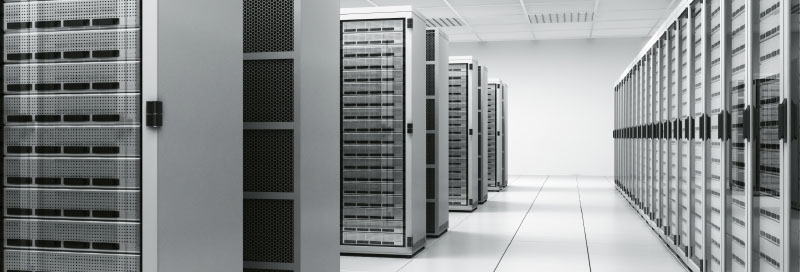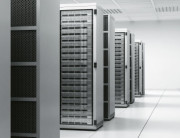Best Data Recovery Raid Software
RAID (originally redundant array of inexpensive disks; now commonly redundant array of independent disks) is a data storage virtualization technology that combines multiple disk drive components into a logical unit for the purposes of data redundancy or performance improvement.
The term “RAID” was invented by David Patterson, Garth A. Gibson, and Randy Katz at the University of California, Berkeley in 1987

Data is distributed across the drives in one of several ways, referred to as RAID levels, depending on the specific level of redundancy and performance required. The different schemes or architectures are named by the word RAID followed by a number (e.g. RAID 0, RAID 1). Each scheme provides a different balance between the key goals: reliability, availability, performance, and capacity. RAID levels greater than RAID 0 provide protection against unrecoverable (sector) read errors, as well as whole disk failure.
RAID levels
RAID 0
RAID 0 consists of striping, without mirroring or parity. The capacity of a RAID 0 volume is the sum of the capacities of the disks in the set, the same as with a spanned volume. There is no added redundancy for handling disk failures, just as with a spanned volume. Thus, failure of one disk causes the loss of the entire RAID 0 volume, with reduced possibilities of data recovery when compared to a broken spanned volume. Striping distributes the contents of files roughly equally among all disks in the set, which makes concurrent read or write operations on the multiple disks almost inevitable. The concurrent operations make the throughput of most read and write operations equal to the throughput of one disk multiplied by the number of disks. Increased throughput is the big benefit of RAID 0 versus spanned volume.
RAID 1
RAID 1 consists of mirroring, without parity or striping. Data is written identically to two (or more) drives, thereby producing a “mirrored set”. Thus, any read request can be serviced by any drive in the set. If a request is broadcast to every drive in the set, it can be serviced by the drive that accesses the data first (depending on its seek time and rotational latency), improving performance. Sustained read throughput, if the controller or software is optimized for it, approaches the sum of throughputs of every drive in the set, just as for RAID 0. Actual read throughput of most RAID 1 implementations is slower than the fastest drive. Write throughput is always slower because every drive must be updated, and the slowest drive limits the write performance. The array continues to operate as long as at least one drive is functioning.
RAID 2
RAID 2 consists of bit-level striping with dedicated Hamming-code parity. All disk spindle rotation is synchronized and data is striped such that each sequential bit is on a different drive. Hamming-code parity is calculated across corresponding bits and stored on at least one parity drive.[9] This level is of historical significance only; although it was used on some early machines (for example, the Thinking Machines CM-2),[15] as of 2014 it is not used by any of the commercially available systems.
RAID 3
RAID 3 consists of byte-level striping with dedicated parity. All disk spindle rotation is synchronized and data is striped such that each sequential byte is on a different drive. Parity is calculated across corresponding bytes and stored on a dedicated parity drive.[9] Although implementations exist,[17] RAID 3 is not commonly used in practice.
RAID 4
RAID 4 consists of block-level striping with dedicated parity. This level was previously used by NetApp, but has now been largely replaced by a proprietary implementation of RAID 4 with two parity disks, called RAID-DP.
RAID 5
RAID 5 consists of block-level striping with distributed parity. Unlike in RAID 4, parity information is distributed among the drives. It requires that all drives but one be present to operate. Upon failure of a single drive, subsequent reads can be calculated from the distributed parity such that no data is lost. RAID 5 requires at least three disks.[9] RAID 5 is seriously affected by the general trends regarding array rebuild time and chance of failure during rebuild.[19] In August 2012, Dell posted an advisory against the use of RAID 5 in any configuration and of RAID 50 with “Class 2 7200 RPM drives of 1 TB and higher capacity” for business-critical data.
RAID 6
RAID 6 consists of block-level striping with double distributed parity. Double parity provides fault tolerance up to two failed drives. This makes larger RAID groups more practical, especially for high-availability systems, as large-capacity drives take longer to restore. As with RAID 5, a single drive failure results in reduced performance of the entire array until the failed drive has been replaced.[9] With a RAID 6 array, using drives from multiple sources and manufacturers, it is possible to mitigate most of the problems associated with RAID 5. The larger the drive capacities and the larger the array size, the more important it becomes to choose RAID 6 instead of RAID 5.[21] RAID 10 also minimizes these problems.
Best Recovery Software
For successful data recovery it’s essential to choose the right software. A useful list of most famous data recovery software.
Stellar Phoenix Windows Data Recovery
Fend off data loss with this immaculate Windows data recovery solution. The software comes as a rescuer in times when your precious photos, music, videos, documents, and other files get deleted accidentally or in a frenzy to free up storage.
Find more at: http://www.stellarinfo.com/
Virtual Lab
Regardless of the reason for data loss, accidental format, damaged partition, virus attack, deleted files, even a formatted hard drive, VirtualLab Data Recovery software does the job! VirtualLab is incredibly easy to use, yet so powerful and robust that it is used daily by data recovery companies world-wide. Works with all Windows operating systems, from Windows 98 to Windows 8, FAT 12/16/32 and NTFS file-systems. Forget having to use different software versions for different recoveries, VirtualLab does it all in one
Find more at: https://www.datarecoverysoftware.net
Data Recovery Wizard Free
EaseUS Data Recovery Wizard Free is the best free data recovery software to solve all data loss problems – recover lost files from hard drive, external hard drive, USB drive, Memory card, digital camera, mobile phone, music player and other storage media due to deleting, formatting, software crash, hard drive damage, virus attacking, partition loss or other unknown reasons. Only three steps and a few clicks to get whatever you lost back!
Find more at: http://www.easeus.com/
GetDataBack Simple
The simplest Data Recovery Software ever. Lightning fast, for FAT and NTFS. You can recover it now. GetDataBack Simple’s user interface is so simple, it enables even the most inexperienced users to conduct their own data recovery with just one click. Our developers have combined decades of data recovery experience with the newest technologies. GetDataBack Simple recovers files from Windows drives when the data is no longer accessible due to formatting, partitioning, virus attack, power or software failure.
Find more at: https://www.runtime.org
MiniTool Power Data Recovery Free Edition
Power Data Recovery is a professional File Recovery Software and Data Recovery Software. Power data recovery software could help you recover all your data no matter the data is lost by accidental deletion, format, re-partition, system crash or virus attack.
Find more at: http://www.powerdatarecovery.com/
File Scavenger – Data Recovery Utility
File Scavenger® Version 4 is a file “undelete” and data recovery utility for Windows® 8, 7, Vista, Server 2003, XP and 2000. File Scavenger® can recover files that have been accidentally deleted (including files removed from the Recycle Bin, in a DOS window, from a network drive, from Windows Explorer with the SHIFT key held down) provided that recovery is attempted before the files are permanently overwritten by new data. File Scavenger® supports both basic and dynamic disks, NTFS compression, alternate data streams, sparse files, Unicode filenames, etc. Except in severe cases, both the file and the folder path leading to the file can be recovered.
Find more at: http://www.quetek.com/
iRecover – Recover data from just about anything
iRecover is the most complete data recovery program available. In addition to outstanding recovery capabilities, it offers everything a data recovery engineer could ask for: two-pass disk cloning (with reverse cloning), a disk viewer that interprets disk structures, automatic RAID0 and RAID5 parameter detection and access to S.M.A.R.T. data to review a disk’s physical status.
Find more at: http://www.diydatarecovery.nl/




